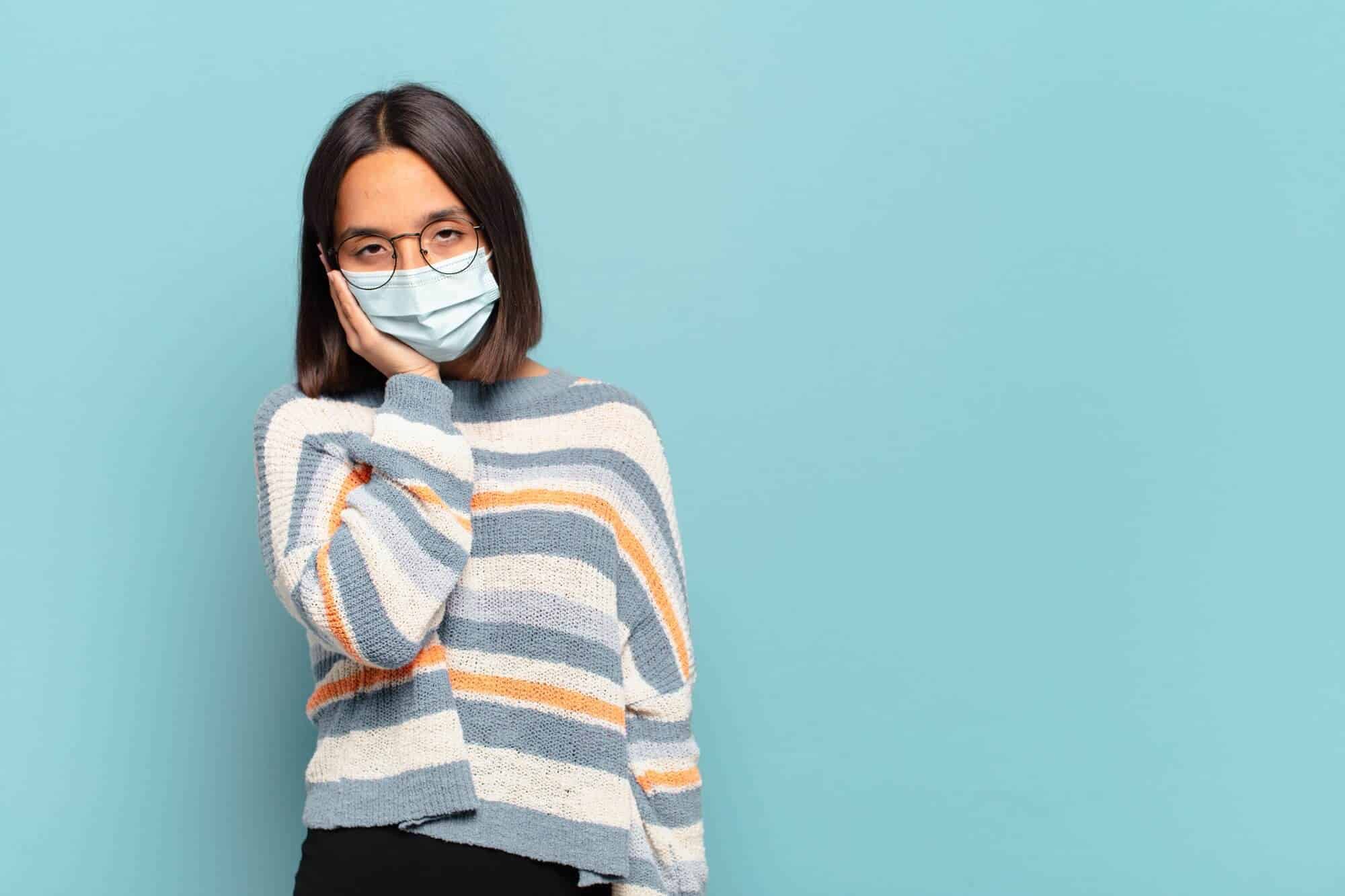Our mouths have been the focus of much research surrounding COVID-19 and its symptoms and side effects. We now know that many people who contract the novel coronavirus experience loss of taste, but further investigations by the scientific community bring to light other worrisome oral signs such as dry mouth, oral thrush, and even herpes-like oral lesions.
Are you experiencing COVID symptoms affecting your mouth?
Follow along as we describe these symptoms and side effects in easily digestible terms to understand your own experience with COVID-19 better. The following data and information come from a recent group of studies from the Laboratory of Oral Histopathology at the University of Brasilia.
These studies show results worldwide, with 41.9% in Europe, 29.7% in Asia, 10.9% in Latin America, 9.3% in the US, 6.5% in Africa, and 1.64% in Oceania. There were a total of 64,876 patients who contracted COVID-19 involved.
COVID-19 and taste


The researchers used data from 130 studies, with a total of 59,998 patients for a taste assessment. They evaluated various taste disorders, including dysgeusia (taste alterations, i.e., foods that now taste bitter, metallic, or sweet), hypogeusia (decrease in taste), and ageusia (total loss of taste).
38% of the study group had taste disorders, with 34% experiencing taste alteration, 33% decreased taste, and 26% a complete loss of taste. Taste disorders were more prevalent in Europe, with 49% of the study participants, 33% in Oceania, 33% in the US, 31% in Asia, 24% in Latin America, and 14% in Africa.
There weren't enough studies where age groups were taken into account for significant age-related data. However, other studies suggest that younger patients are more likely to experience a taste disorder than older patients. This study, published in the Journal of Travel Medicine and Infectious Disease, showed that 50.1% of patients less than 65 years of age had taste disorders, while only 22.2% of those over 65 did.
COVID-19 and dry mouth (xerostomia)
If you contracted COVID and you've experienced a dryer mouth than usual, you're in good company. Data from 1,017 patients from a study by Dr Omezli Torul showed that 43% of patients experienced dry mouth, which was a symptom that showed up before other COVID-19 symptoms.
COVID-19 and mouth sores
There were 36 reports published on mouth sores, with 308 patients participating in the study in hospitalised and non-hospitalised settings. Additionally, the researchers included five cross-sectional studies with data from 2,491 patients. An analysis found that 512, or 20.5%, of patients had mouth lesions or sores.
The most common of these sores were similar to canker sores. The next most common were herpes-like sores, followed by oral thrush, geographic tongue, parotitis (swelling of the salivary glands), and angular cheilitis (swollen and red corners of the mouth).
Mouth sores tended to appear after the onset of other COVID-19 symptoms.
Summary of conclusions
- Taste disorders had an overall prevalence of 38%, and women may be more susceptible due to hormonal changes.
- Dry mouth was the most common oral symptom associated with COVID-19.
- Mouth sores and fungal infections were most likely to appear as canker sores or herpes-like lesions.
In general, taste disorders, dry mouth, and oral lesions (mouth sores) are common symptoms of patients with COVID-19, but “more studies will be necessary to confirm their association with direct SARS-CoV-2 infection in the oral cavity.”
What should you do if you experience these symptoms?
Your COVID-19 symptoms should go away as you recover from the virus. However, you should keep an eye on your symptoms and if they get worse, let your doctor know. Basic care instructions for these symptoms include:
- Staying hydrated
- Getting adequate rest
- Antiseptic mouthwash for mouth ulcers (ask your doctor first)
- Dry mouth mouthwash if you experience xerostomia
Contact your doctor if these symptoms last or get worse after you've recovered from COVID.
Journal of Dental Research: Oral Manifestations in Patients with COVID-19: A 6-Month Update. Consulted 4th September 2021.
Journal of Travel Medicine and Infectious Disease: Olfactory and gustative disorders for the diagnosis of COVID-19. Consulted 4th September 2021.
Journal of Travel Medicine and Infectious Disease: Evaluation of the xerostomia, taste and smell impairments after Covid-19. Consulted 4th September 2021.




